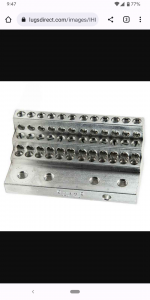Cody Brown
Member
- Location
- PA
- Occupation
- Engineer
I have 2 questions, first regarding grounding of DC Power Supplies, and second regarding making copper bus bars.
For a 3000 Watt 12 VDC 200A Power supply (MeanWell RSP 3000-12), do you need to ground the output 0VDC terminal to the input 208 or 240VAC equipment grounding conductor. Given that the input AC is only on a 20A circuit, 12awg wire, and the DC output is 200A, 2/0 wire, does it make much sense to bond a 12awg wire to a 2/0 wire circuit for grounding?
Second question, is there any codes that would prevent the fabrication and use of a copper bus bar to be used on a 12VDC-200A circuit, if that bus bar is inside an enclosed panel? Does this bus bar need to to be certified to any degree for NEC 70. I am planning on using a 1/4 x 1.5 inch copper bar (McMasterCarr 2557T64), bolted to several posts (McMasterCarr 9365T5), as this provides space savings in the panel.
For a 3000 Watt 12 VDC 200A Power supply (MeanWell RSP 3000-12), do you need to ground the output 0VDC terminal to the input 208 or 240VAC equipment grounding conductor. Given that the input AC is only on a 20A circuit, 12awg wire, and the DC output is 200A, 2/0 wire, does it make much sense to bond a 12awg wire to a 2/0 wire circuit for grounding?
Second question, is there any codes that would prevent the fabrication and use of a copper bus bar to be used on a 12VDC-200A circuit, if that bus bar is inside an enclosed panel? Does this bus bar need to to be certified to any degree for NEC 70. I am planning on using a 1/4 x 1.5 inch copper bar (McMasterCarr 2557T64), bolted to several posts (McMasterCarr 9365T5), as this provides space savings in the panel.

